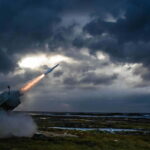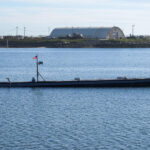The Air Force blamed engine failure one hour after takeoff for the May 4 crash of an F-16C Falcon west of Hill AFB, Utah. The service said in a statement the cause of the mishap was failure of the number 17 blade in the first stage fan of the engine. Cracking along the anomaly in the number 17 fan blade and eight years of operating fatigue attributed to the engine failure. As a result, the blade broke free from its…
Contract Updates
Aerojet Rocketdyne Coleman Aerospace Inc. a wholly owned subsidiary of Aerojet Rocketdyne Inc. (Orlando, Florida) – $10,333,902
Aerojet Rocketdyne, Coleman Aerospace Inc., a wholly owned subsidiary of Aerojet Rocketdyne Inc., Orlando, Florida, is being awarded a $10,333,902 modification (P00258) to exercise an option to a previously awarded contract (HQ1047-14-C-0001) to increase calendar year 2026 program management office…
The Bell Boeing Joint Project Office (California, Maryland) – $262,069,451
The Bell Boeing Joint Project Office, California, Maryland, has been awarded a maximum $262,069,451 fixed-price-incentive, performance-based contract for V-22 Phase II consumable market basket items. This was a sole-source acquisition using justification 10 U.S. Code 3204 (a)(1), as stated in…
Northrop Grumman Systems Corp. (Oklahoma City, Oklahoma) – $264,867,008
Northrop Grumman Systems Corp., Oklahoma City, Oklahoma, has been awarded an estimated $264,867,008 modification to award a hybrid firm-fixed-price and cost-plus-fixed-fee delivery order (SPRTA1-26-F-0020) against a five-year indefinite-delivery/indefinite-quantity contract (SPRTA1-19-D-0001) for B-2 rudders. This was a sole-source acquisition using justification…
General Dynamics Land Systems Inc. (Sterling Heights, Michigan) – $11,146,013
General Dynamics Land Systems Inc., Sterling Heights, Michigan, was awarded an $11,146,013 modification (P00122) to contract W56HZV-22-C-0012 to exercise option hours for Abrams system technical support. Work will be performed in Sterling Heights, Michigan, with an estimated completion date of…













